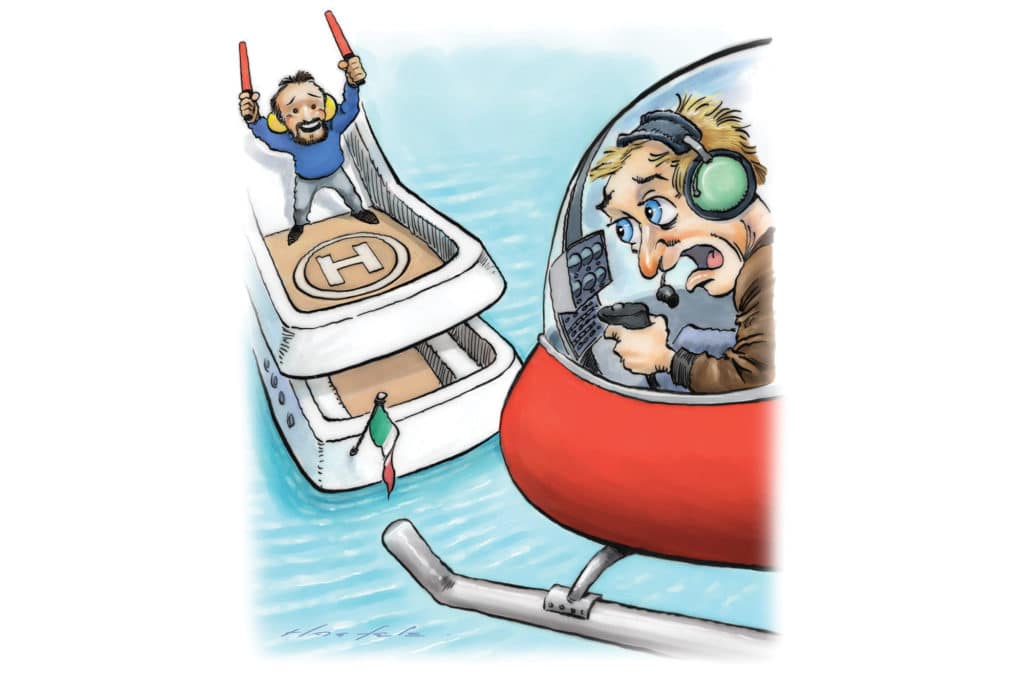
My yachtbuilder pal Mike sent me an article on interior yacht design with a note attached. “Must be hard to write this stuff,” he commented. “It just seems either insincere or delusional.” I suspected, though, that it was not the writer’s style but instead the article’s content that got Mike’s attention: the notion of using a pile of pebbles as the inspiration for a boat’s design.
Mike and I are products of the generation that believed form should follow function and that boats should be more than an experiment in modern art. Mike built his brand around solid design. While each boat he’s built is unique, all had salt water in their DNA. Curated branding and proven design benefited everyone.
Traditionally, yacht designers abided by an unspoken Hippocratic oath of sorts. They had a free hand to fiddle with the future, but first, they needed to do no harm. Performance and safety were paramount. It was a time when beds were berths, and they were measured by length and width, not diameter. Kitchens were galleys and had no islands. Sky lounges were bridges, and bathrooms were heads that had separate showers, not cramped acrylic capsules.
The thinking changed in the 1980s with the invention of yacht-designer practitioners. These visionaries were not inspired by experience at sea or bound by reality. For me, change arrived with a phone call from a high-end interior-design firm. Its best client—a name-brand multinational—had asked for something a bit different. Instead of another boring skyscraper, it wanted a 150-foot yacht. I would provide the boring stuff (reality), and my new partner would add the razzle-dazzle.
When we faced off with the executive team, I performed my usual routine, focusing on performance and utility. I overlooked the fact that the Italian helicopter they’d spec’d needed another 50 feet of yacht. I figured we’d get to it later. My new partner headlined the presentation with slick illustrations and lofty design-speak. Organic solutions. Naturally flowing forms. Spatial relationships. It was all part of a new language to me. While a precipitous low in the company’s stock soured the deal, the effort was an education. I needed help with the new lingo.
My late pal Ted Black was just the man. Ted was a graduate of Parsons School of Design and Pratt Institute. He had worked with design icon Donald Deskey, the designer of Radio City Music Hall in New York City, and helped pen the iconic bull for the Merrill Lynch logo. In the early 1980s, Ted managed design at Page Avjet, where he turned 747s into flying palaces for heads of state.
Mike had drawn on Ted’s genius as well. Ted taught us the lingo and much more. While he might not have been able to squeeze inspiration for a yacht from a pile of pebbles, he did apply innovative thinking in transportation design that made sense at sea.
Finding design inspiration far from the water is OK, but it’s wise to remember that yachts don’t have seat belts. Remember: Do no harm.









